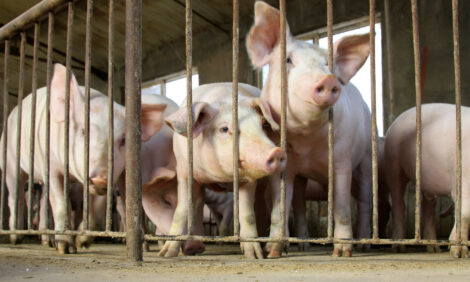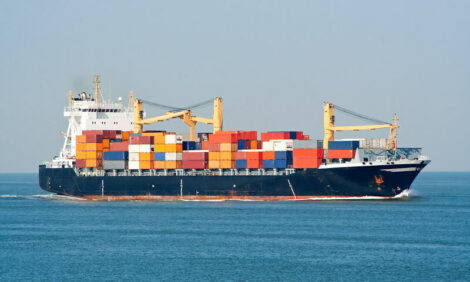



Turkey battles against Foot-and-Mouth
TURKEY - EU-funded FAO project helps Turkey cope with foot-and-mouth virus.
Sometime in late 2005 a stealthy invader slipped across one of Turkey's eastern borders and started to move westward toward Europe: a new strain of the virus that causes foot-and-mouth disease (FMD), a devastating sickness affecting cows, pigs, sheep and goats.
Waves of FMD ravaged European farms in the years following WWII, but it's been stamped out there for much of the past 20 years, thanks to rigorous animal health programmes.
But every once in a while, the virus slips back in.
In 2001, the virus entered the United Kingdom by an undetermined route, rapidly jumping from pigs to sheep and then cattle: by the time the dust settled, at least 6 million animals had been slaughtered and economic losses were tallied at €13 billion.
Since then, Europe's cattle and pig farmers have worried that the disaster could repeat itself.
Bottleneck at the Bosporus
Turkish farmers and animal health authorities are all too familiar with the threat of foot and mouth. With six borders in Asia, where FMD is endemic, Turkey is on the front line in the battle to stop this invasion.
And Thrace, that strategic slip of Turkey on the western side of the Bosporus -- Asia's gateway to Europe -- is ground zero in this struggle.
"FMD is a virus that propagates incredibly quickly -- when it discovers a new niche where there is no immunity among animals, it just rips through them," says FAO expert Keith Sumption. "Europe is FMD free, and animals there aren't vaccinated against it – so they have no immunity. Couple that with the fact that Thrace and the southern Balkans have historically been a point of entry for animal diseases migrating from Asia into Europe, and you begin to see Thrace's strategic importance."
To address this threat, the European Union, FAO and Turkish authorities have teamed up in a collaborative effort that joins European resources with FAO expertise to help Turkey's General Directorate of Protection and Control (GDPC) conduct regular vaccinations, track animal immunity levels and monitor for the disease in Thrace.
The long-running project has been highly successful in stopping FMD at Europe's doorway (see sidebar). But it was put to the test earlier this year when the new FMD strain cropped up.
"We widely vaccinate animals in Thrace," explains Dr Musa Arik, head of GDPC’s Animal Health Services, "but their immunity is no help against a previously unknown strain."
Ground zero
Balabancik village in Terkidag Province is a small hamlet of 360 families. Dairy cows are its bread and butter. Each family here has about 10 animals, and relies on the milk they produce to earn their livelihoods. The cows are quartered in small barns within the village confines, and twice a day the farmers' children drive them through Balabancik's winding streets to communal wells for watering.
The close quarters and frequent mingling of animals make it a situation ripe for the rapid spread of FMD, and in February 2006 an outbreak of the new FMD variant occurred.
"It started with one cow. I think she caught it at the communal well," recalls dairy farmer Recep Duba, 54. "Then all of a sudden six animals had it. It spread like lightning."
Outbreak!
Dairy farming in the rest of Thrace is conducted in much the same way as it is in Balabancik, and within a couple of days district vets in other villages were reporting problems too.
Soon GDPC was dealing with outbreaks in 15 different locations.
"First we stopped all movement of animals within the village. Then we disinfected, and made sure that nobody was transporting animals outside of the villages," says Hüsiyin Akdogan, district vet for Balabancik.
Emergency vaccinations were also initiated, but as much of the rest of Turkey was wrestling with a similar situation, supplies available for Thrace were insufficient except for immediate vaccination around the first affected villages.
So the FAO-EU project swiftly mobilized to help. The EU's vaccine bank, one of the largest in the world, had stocks of an antigen on hand that could be rapidly turned into an effective vaccine, and production of 2.5 million doses for use in Thrace began immediately.
At the same time a team of FAO and EU experts was deployed to the field to help provincial authorities plan their counterattack, ranging from where and how the available vaccine should be used to what quarantine measures should be put in place, and making sure that adequate support staff and equipment were available to rapidly complete area wide vaccination.
"The idea was to help them make the best use of the resources they had on hand, especially in the face of the outbreak of avian influenza, which was peaking at just that moment," says Sumption.
Disease stopped in its tracks
"I've been a vet for over 20 years and working in this region nearly as long, but FAO's advice on rapid response measures really helped us get a handle on things and hold the fort until the European vaccine arrived," says Erol Basataç, GDPC's director in Kirklareli province.
GDPC teams conducted "ring" vaccination campaigns around outbreak sites in order to cordon off and isolate the disease. Farmers and village leaders were instructed in proper disinfection techniques. Movement of animals both between and among villages was prohibited. Sick animals were immediately quarantined and soon culled.
The combination of expert FAO advice, the European vaccine and hard work by GDPC proved potent: eventually the outbreaks were contained and stamped out, with only one new case reported.
Follow-up blood monitoring conducted in May by Turke?y's FMD Institute showed that vaccination had been successful, and sufficient to ensure a protective barrier against repeat invasions from infected areas to the east.
To be sure, the EU donated an additional 2.7 million doses of vaccine from its reserve and through purchase by the EU-FAO project for use during GDPC's regular fall vaccination booster campaign and to provide a strategic reserve within Turkey to counter any resurgence during the 2006-7 winter season, when FMD risk is again expected to peak.
For Nermin Kahraman of the EC Delegation to Turkey in Ankara, collaboration with FAO was key to the victory.
"FAO possesses substantial veterinary expertise and fast and simple procedures to deploy staff, vaccines and equipment. It also has established a comprehensive network of experts, and it has the resources to combine epidemiological, livestock, climatic and market data generated in different regions of the world and bring it to bear," she says. "FAO's expertise makes our efforts to help Turkey combat FMD stronger and more effective."
ThePigSite News Desk








